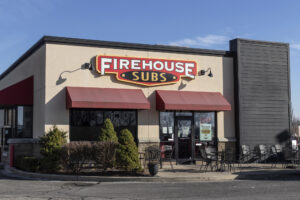
©KCKATE via Canva.com
Fast-Food Workers ‘Can’t Afford To Eat the Meals They Serve,’ Study Says
May 20, 2025
Fast-food workers are tasked with a myriad of responsibilities, from manning the grill or fryer to being the smiling face greeting customers at the counter or the drive-thru window. Despite this, however, it appears that the pay being offered in exchange for their services may not be meeting the increasingly expensive cost of living, including the ability to eat the very meals they produce, according to a recent LendingTree study.
“Even working full time, they fall significantly short of earning a living wage and would need to work up to 78 hours a week to cover basic living expenses,” staff writer Lauren Clifford explained.
“Forget the basics — fast-food workers in these metros can’t afford to eat the meals they serve. It takes them more than two times longer than their neighbors on average to buy a typical flagship fast-food meal,” she added.
Fast-Food Workers Struggle To Cover Basic Expenses, Even if They Work 40 Hours Per Week
Among the study’s key findings: Fast-food workers can’t cover their basic living expenses in any of the 50 largest metropolitan areas in the U.S., even if they work full-time (40 hours a week); they face a livible wage gap of between 23% (in Fresno, California) and 48.4% (in Atlanta, Georgia), less than what is deemed to be a living wage; and they would need to work between 52 and 78 hours a week to pay their basic bills.
Furthermore, in a hypothetical situation where fast-food workers in the largest cities in America decided to eat all three meals a day at their respective restaurants, they couldn’t afford to. Doing so would set them back over two-fifths (40.3%) of their wages in food costs alone. By way of comparison, those earning the average U.S. wage would spend less than one-fifth (18.6%) of their salary engaging in the same behavior.
“As inflation drives up food costs, 16% of Americans are turning to fast food and other ‘cheaper options’ to save money. But rising fast-food prices undermine this strategy, making a once-affordable American staple an expensive treat,” Clifford wrote.
“Almost 80% of Americans now consider fast food a luxury, and the majority say they’ve recently been shocked at the price of a fast-food bill,” she continued.
A calculation of the livable wage shortfall (as it relates to fast-food workers) provided by LendingTree saw Atlanta (-$26,476 annually, a shortfall of 48.4%), Nashville (-$23,710, -44.7%), Dallas (-$21,599, -43.5%), and Charlotte, North Carolina (-$22,753, -43.4%), as the most difficult geographies for said workers to work and reside in.
Recent News








